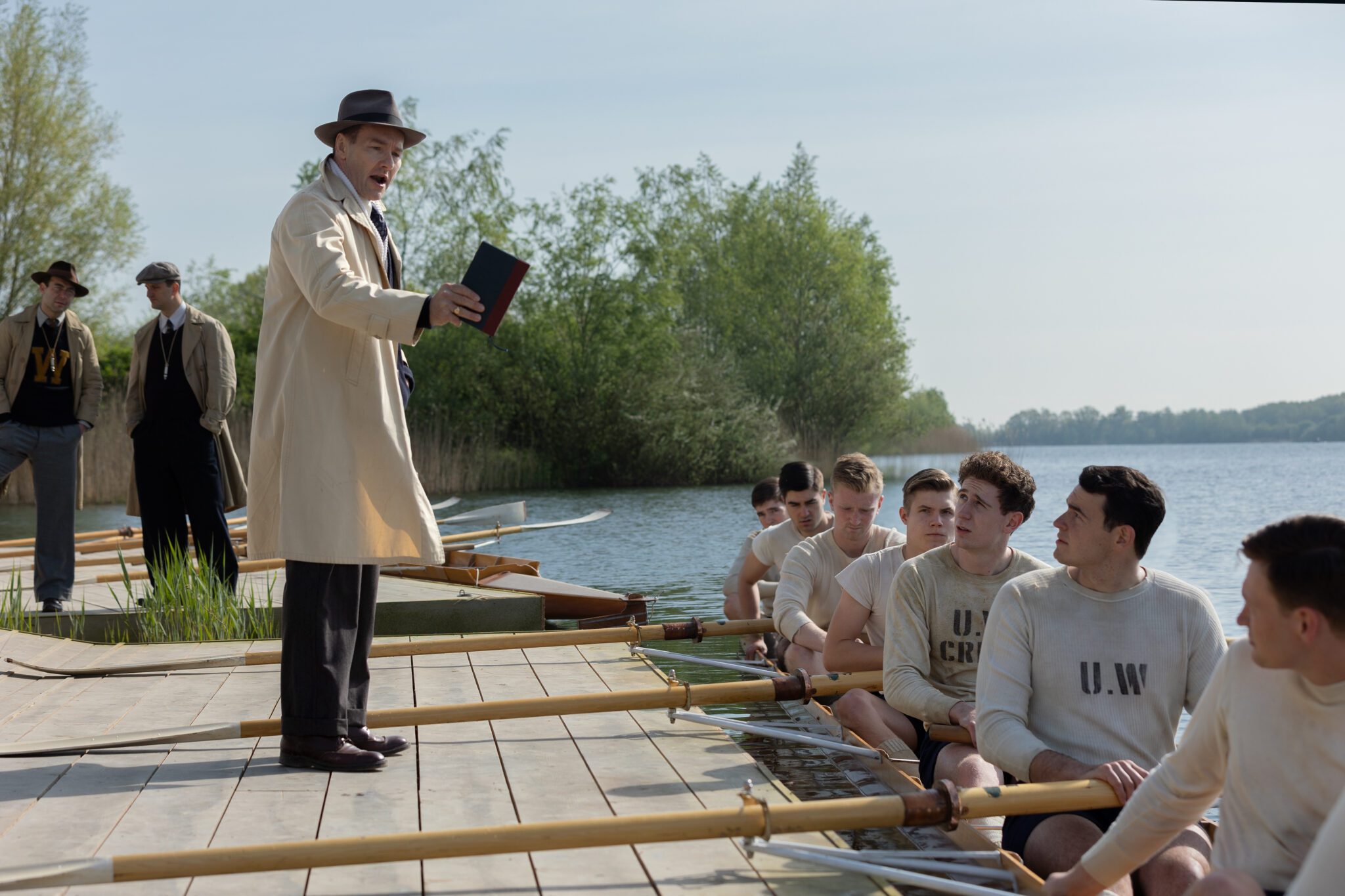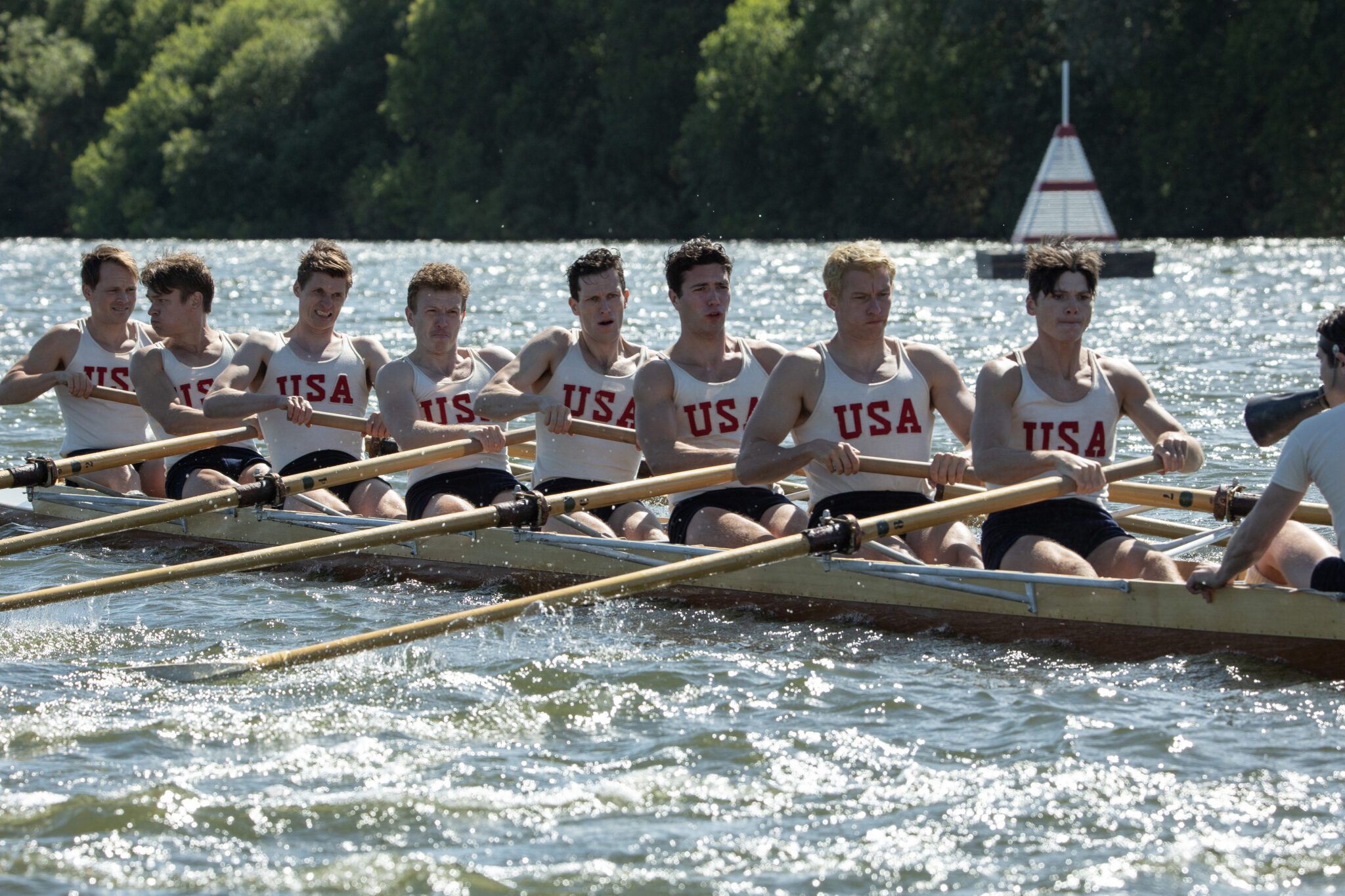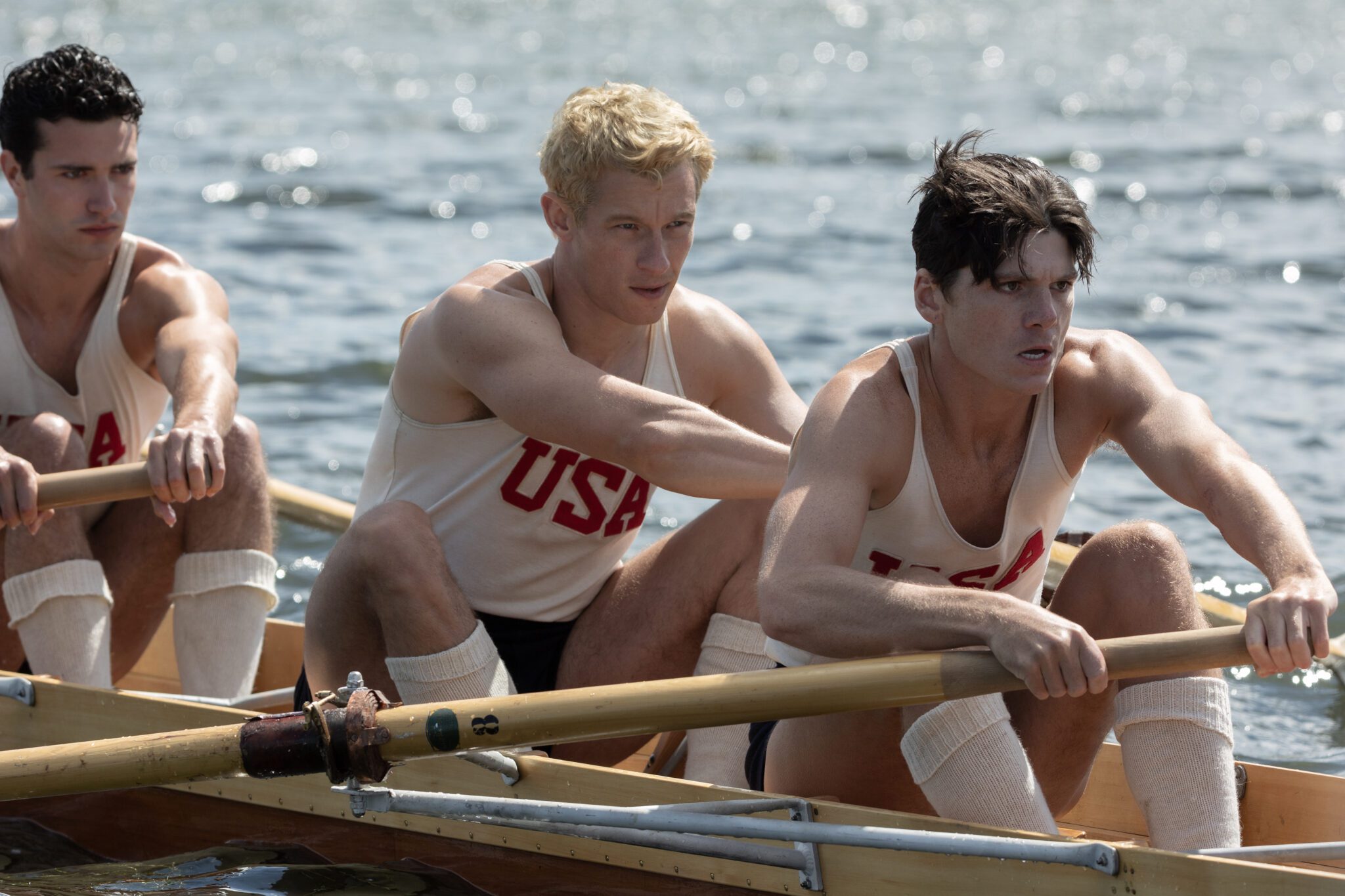“It’s not about you; it’s about the boat.”
The most prevalent trope for sports film is overcoming adversity. The Boys in the Boat, directed by George Clooney, certainly fits that pattern. Based on the book by Daniel James Brown (adapted into a screenplay by Mark L. Smith), this is the true story of the 1936 University of Washington crew team that went on to represent the USA at the Berlin Olympics. Rowing may not be most people’s idea of an exciting spectator sport, but then the film is about the people that power the boats.
At the beginning of the film Joe Rantz (Callum Turner) is a student who is about to be kicked out of school if he can’t pay his tuition. In the midst of the Depression, Joe is living in the shell of a car in a Hooverville. Finding work is near impossible. A friend tells him about a tryout for the rowing team. Making the team provides food, lodging, and a job that will pay for his education. At the tryout, there are over 100 men all with the same goal, hoping to fill nine spots in the junior varsity boat. The two week tryout is physically and mentally demanding. Coach Al Ulbrickson (Joel Edgerton) pushes them to the limits and beyond. Joe manages to capture one of the seats and his life seems to be getting easier.

Also at this time, he connects with Joy Joy Simdars (Hadley Robinson), a student in one of his classes on whom he had a crush back in elementary school before she moved away. It turns out the crush was mutual and they begin a courtship that plays out as the rowing season.
Learning to row crew is difficult. It is not just the physical challenge of pushing the body to exhaustion; it requires each of the rowers to do their job in perfect unison with the others. It is only by becoming a unit that a boat can reach its full potential. These new rowing recruits have to learn not only the complicated mechanics of rowing, they have to learn to perform together.

The rowing program at Washington is also feeling the grips of the Depression. There is no money for any frills. This is unlike many of the other schools—especially in the east—where rowing is popular and done by well to do students in the Ivy League schools. At one point we are reminded that those rich teams row because they want to; this team rows because they have to.
Soon, the JV has surpassed the skill of the varsity. When the decision is made to send the JV to the collegiate championship, which also serves as the Olympic selection, Coach Ulbrickson comes under fire. His job will depend on winning. There are more obstacles along the way before they have a chance to be one more thorn in Adolf Hitler’s side in those Olympics. (There is a brief scene with Jesse Owens at the opening ceremonies to remind us of what happened in Berlin.)
The film provides a feel-good reward as we see the ways that the team—but especially Joe—triumph over the various trials that pile up before them. It also seeks to have us consider the need for individuals to work together. We see the team come together but, because the focus is so much on Joe, we don’t really see the personal sacrifices that each person made to achieve the unity that made them successful. That is a message that needs to be strengthen in a world that is still dreadfully divided in many ways.

The Boys in the Boat opens on Christmas Day.
Photos courtesy of Metro-Goldwin Mayer Pictures.





